Введение
История электронной музыки является удивительным путешествием от ранних экспериментов с терменвоксом до современных жанров электронной танцевальной музыки (EDM). В течение десятилетий эта музыкальная форма претерпела значительные изменения и стала одним из самых популярных стилей современности.
В начале прошлого века, Лев Термен, российский физик и музыкант, изобрел инструмент под названием терменвокс. Он работал на принципе электромагнитных колебаний и позволял создавать звуки без физического контакта с инструментом
Этот инструмент сразу же привлек внимание музыкальных исследователей и вошел в историю как одно из первых достижений в области электронной музыки
С течением времени появились новые инструменты и технологии, такие как синтезаторы, электронные драм-машини, семплеры и компьютеры, которые позволили музыкантам создавать различные эффекты и звуковые текстуры. Это привело к невероятному разнообразию стилей и направлений в электронной музыке.
В настоящее время EDM (Electronic Dance Music) является одним из самых популярных жанров электронной музыки. Он включает в себя такие подстили, как техно, хаус, транс, дабстеп и многое другое
Музыкальные фестивали и клубы по всему миру приковывают внимание миллионов людей, предлагая им уникальное звуковое и визуальное впечатление
История электронной музыки полна удивительных открытий и творческих экспериментов. Она продолжает развиваться и вдохновлять новое поколение музыкантов и слушателей. Погрузитесь в мир электронной музыки и откройте для себя ее уникальное звучание и эмоциональную силу!
Определение электронной музыки
Электронная музыка — это жанр музыки, созданный с использованием электронных инструментов, устройств и технологий. В отличие от традиционной акустической музыки, где звуки производятся при помощи физических инструментов, электронная музыка создается с использованием электрических сигналов и программного обеспечения.
Основное отличие электронной музыки заключается в возможности экспериментировать с звуками и создавать новые текстуры и эффекты. Электронные инструменты и программное обеспечение позволяют музыкантам создавать и изменять звуки практически безграничными способами.
Электронная музыка широко представлена различными поджанрами, включая амбиент, IDM, техно, дабстеп, транс и многое другое. Каждый из этих стилей имеет свои особенности и подходы к созданию музыки, что делает электронную музыку настолько разнообразной и уникальной.
Электронная музыка стала неотъемлемой частью современной культуры и влияет на мировую музыкальную сцену. Ее звуки и ритмы можно услышать в клубах, на фестивалях и в записях самых популярных артистов. Она продолжает развиваться и привлекать новых талантливых музыкантов, готовых исследовать и расширять границы электронного звучания.
Значение электронной музыки в современном мире
Электронная музыка имеет огромное значение в современном мире и оказывает сильное влияние на культуру, музыкальную индустрию и нашу повседневную жизнь. Вот несколько причин, почему электронная музыка стала так популярной и востребованной:
- Танцевальные ритмы и энергия — Электронная музыка часто ассоциируется с танцами и клубной сценой. Ее уникальные ритмы и звуки создают атмосферу праздника и энергии, которая заставляет людей двигаться и наслаждаться музыкой вместе.
- Инновации и эксперименты — Электронная музыка всегда была площадкой для инноваций и экспериментов. Музыканты постоянно ищут новые звуковые эффекты и техники, чтобы расширить возможности музыкального творчества. Это влияет на развитие технологий и программного обеспечения, а также вдохновляет других музыкантов на новые подходы к созданию музыки.
- Глобальное сообщество — Электронная музыка собирает вместе людей со всего мира. Музыкальные фестивали и мероприятия посещают миллионы поклонников электронной музыки, создавая единство и сильное сообщество. Это позволяет людям поделиться своей любовью к музыке и принять участие в уникальном культурном опыте.
- Влияние на другие жанры — Электронная музыка имеет огромное влияние на другие жанры и стили музыки. Ее звуки и техники используются в поп-музыке, роке, хип-хопе и многих других жанрах. Это свидетельствует о ее значимости и способности переплетаться с другими музыкальными формами.
Электронная музыка стала неотъемлемой частью современной культуры и продолжает привлекать и вдохновлять множество людей. Ее значимость в современном мире трудно переоценить, и она продолжит развиваться и способствовать новым творческим возможностям в будущем.
Electronic Music Genres
The main types of electronic music genres are well recognised and largely agreed on. However, this particular type of music evolves and develops as quickly as its technology, so an advance warning: this may become incomplete just months after this post is published (we’ll do our best to keep it updated!).
We’ll also be taking a pretty UK/US-centric view in this article, whilst referencing as many notable global viewpoints as possible – but a definitive global view on this topic is another long article in itself. For the purpose of this piece, the main electronic music genres are:
- Bass music
- Disco
- Drum and Bass
- Dubstep
- EDM
- Jungle
- Hardcore
- House
- Techno
- Trance
- Garage
Breakbeat
Breakbeat started in the 1970s and is known for its use of hip-hop, funk, jazz, and R&B drum samples. Its influence can be found in many forms of music such as Deep House, Drum & Bass, UK Garage, and even Trip-Hop.
It is said to have been founded in New York in the 1970s by Grandmaster Flash and DJ Kool Herc. Unlike other genres, there is no fixed tempo for breakbeats and instead, the tracks are characterized by their danceable rhythm, the use of classic funk samples, hi-pass filters, and other audio effects.
In the 1980s, Breakbeats were incorporated into non-hip-hop music. In the 90s, Florida Breaks, Breakbeat Hardcore, Psychedelic Breakbeat, Nu-Skool Breaks, and Progressive Breaks emerged as new sub-genres.
Artists like The Chemical Brothers, Propellerheads, The Prodigy, Fatboy Slim, and Death By Vegas are considered pioneers of this genre.
The Chemical Brothers
Garage
The name “garage” comes from the New York nightclub Paradise Garage which operated from 1977 to 87 and artists ranging from The Clash to Sylvester played at the venue, as long as the music they played could be danced to.
Inspired by R&B, jungle, and garage house, UK Garage emerged in England in the mid-90s.
The music is defined by the use of a four-on-the-floor beat at 130BPM, deep sub-bass basslines, and sped-up or chopped-up vocals emulating the dub sound-system sound. UK Garage is said to have inspired genres such as Dubstep, Future Garage, and UK Funky.
While Garage was popularised by artists like Sunship, Craig David, and Armand van Helden in the late 1990s and early 2000s, it was brought back into the spotlight recently by artists like Disclosure and Jamie XX.
Jungle And Drum & Bass
The UK rave scene in the 90s also saw the rise of another new genre that came from breakbeats, dub reggae bass, and syncopated percussions.
Generally characterized by its fast tempo ranging from 150 to 200BMP, Jungle emerged also as a result of the sound-system culture prevalent at the time and became a cultural expression for urban lower class youth who were feeling the pressure of living in a post-Thatcherite society. Although there is no exact record of who can be credited for coining the term “Jungle”, Rebel MC, MC Navigator, and Top Buzz’s MC Mad P have all been attributed at some point.
Jungle has since evolved into two major subgenres: Ragga Jungle and Jump-Up.
Some of the most iconic Jungle tracks are “Everyman” by Kenny Ken, “Burial” by Leviticus, and “Bad Ass” by Aphrodite. Jungle became a major forerunner for Drum & Bass, which would emerge by the mid-90s.
Drum & Bass is characterized by its use of sub-heavy basslines, synthesizers, and samples along with breakbeats falling usually between 165 to 185BPM. Some of its sub-genres further branch out into Mainline, Light, and Heavy Drum & Bass.
Goldie, DJ Hype, Roni Size, Chase & Status, and Pendulum are some of the names immediately associated with Drum & Bass.
Garage
Born at Paradise Garage in 1970s and 1980s New York, garage is often associated with the UK scene, with many Brits unaware of its American roots. Since the 1990s, the UK grew obsessed with the sound and it helped set the foundations for many new subgenres.
Garage Subgenres
We wanted to show just how much this genre led to new sounds, so we’ve gone against our criteria for other genres in this article, to illustrate the point.
- UK Garage
- Speed Garage
- 4/4
- Bassline
- Grime
UK Garage
When you say garage in the UK, this is what most people will think of. The 90s were its heyday. It was a vibe created through the UK underground dance club scene and seemingly nothing could stop it from hitting the mainstream. Artists like M. J. Cole, Artful Dodger, Zed Bias, So Solid Crew, Craig David and Ms Dynamite are major players of this sound.
Speed Garage & 4X4
These are the more high-octane takes on the garage sound. By taking 4-to-the-floor New York garage, speeding it up, and combining it with breakbeats, a far more chaotic sound was born. We know, 4×4 and speed garage aren’t technically the same thing, but their origins and sounds are so linked we’ve put them together. Some would even argue 4×4 is an umbrella term for speed garage and our next subgenre. Check out artists like 187 Lockdown, Todd Edwards, Double 99 and Groove Armada.
Bassline
For a while this sound was massive in the UK, it then went through a period of becoming almost comical. Now though, the UK bassline scene is thriving. Similar to speed garage in many ways, this takes that 4X4 vibe to new levels of energy. Artists such as DJ Q, Flava D, TS7 and Platnum are a good representations.
Grime
This is a seriously contentious subgenre for the garage section. However, if there was no garage, there would certainly be no grime. In fact, most of the pioneering grime vocalists, producers and DJs started out in the garage scene. Grime went on to become a British institution in its own right. If you’re not familiar, listen to the likes of Kano, Wiley, Dizzee Rascal, Skepta, Ghetts and D Double E.
IDM
Intelligent Dance Music (IDM) originated from a collection of artists in the United Kingdom, but the term IDM itself is believed to have originated in the United States in 1992 after the release of the ‘Artificial Intelligence Warp’ compilation, which included tracks by Aphex Twin, I.A.O., Speedy J, The Black Dog, B12, The Orb, and Autechre. This was a far departure from music to simply dance to, and comprised of textures and ambient soundscapes. The idea of IDM was to connect with the music intimately and listen to it over headphones instead of big speakers at a nightclub.
Since the term “Intelligent” Dance Music is often considered condescending, IDM is also referred to as ‘Art Techno’, ‘Electronica’, or ‘Armchair Techno’.
Some of the most popular IDM artists are Aphex Twin, Squarepusher, and Amon Tobin.
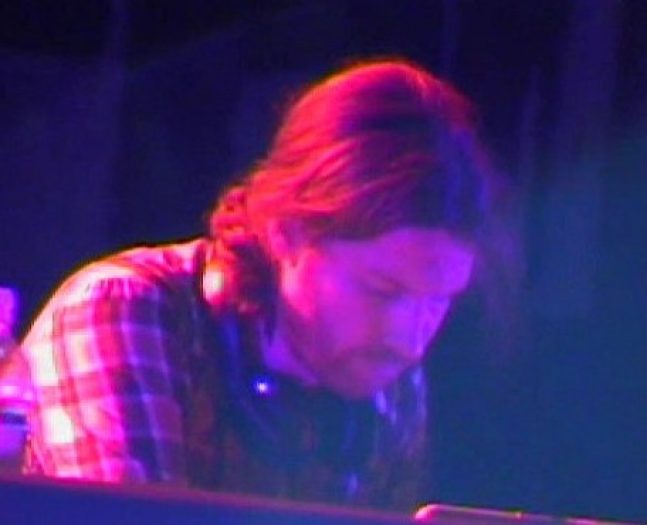
Aphex Twin
Возникновение понятия Techno
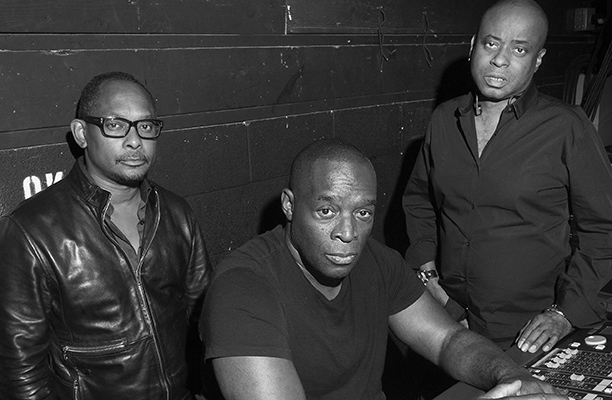
Как отмечалось выше, понятие техно зародилось в середине 80-х годов в Бельвилле. Здесь жил и трудился Хуан Аткинс и его друзья, Кевин Саундерсон и Деррик Мэй. В последующем к ним присоединился Эдди Фолкс, Блейк Бастер и Джеймс Пеннингтон, которые все увлекались электронной музыкой. Музыканты записали несколько десятков композиции, каждая из которых относилась к необычному явлению в музыкальном мире. Собственные издания они именовали Techno.
Появлению стилистики предшествовали другие авторы. Среди наиболее известных считается Kraftwerk. Об этом во многих интервью утверждается Аткинс, Саундерсон и Мэй. К прочим относится влияние Yellow Magic Orchestra и Джорджио Мородера (Giorgio Moroder).
Techno
One of the biggest genres of electronic music, Techno, began in Detroit in the United States in the 80s, before taking over the rest of the world in the 90s. The key characteristic of Techno is a solid, steady four-on-the-floor beat ranging from 120-150bpm. Drum machines such as the Roland TR-808 and the TR-909 have become synonymous with Techno and software emulations of it are used to make Techno music to this date.
The fusion of Kraftwerk, Yellow Magic Orchestra, and Giorgio Moroder’s synth-heavy futuristic sound with African-American House, Funk, and Electro music gave birth to “techno”, which is now further categorized into sub-genres such as Minimal, Acid, Industrial, Hardcore, Dub and Ambient Techno.
Some of the most notable influences of Techno can be found in the works of The Prodigy, The Chemical Brothers, Aphex Twin, Apparat, and Modeselektor. Techno still thrives in the legendary clubs of Berlin such as Berghain.
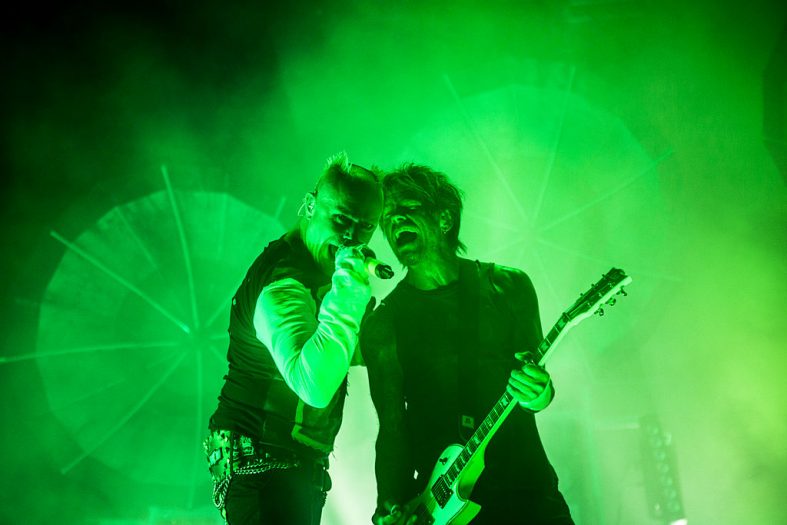
The Prodigy
Bass Music
Bass music can be quite hard to define. It is a bit of a catch-all term, used to umbrella a load of sub-genres and interpretations of other genres. For example, bass house, some interpretations of trap and niche interpretations of moombah and garage can sit in this category. But the main ones, in our opinion are below.
Bass Music Subgenres
This list could be exhaustive, but again, we’ve stuck to the main ones. Others should arguably be included (UK bass music, moombahton and more) but these two encapsulate the genre best and are less ambiguous, in our humble opinion.
- Bass House
- Trap
Bass House
This is a far more dancefloor-centered version of house. its origins are debateable but one source traces it to the mid-2010s, when dubstep was declining in popularity and the UKG, house and bassline scenes were on the rise. It’s high energy, bass-heavy (obviously) and designed to get the crowd going.
Trap
Now, this one could’ve easily sat under dubstep, or even hip hop (if we had included in this article). We’ve gone for bass music though, as, again, it’s a bit of a hybrid genre. It evolved in the early 2010s out of the dubstep scene, blending with more American-influenced trap hip hop from Atlanta.
Жанры
-
Окружающий
- Эмбиент даб
-
Дарк эмбиент
- Dungeon Synth
- Дрон
- Illbient
-
Нью-эйдж
- Андский нью-эйдж
- Неоклассический нью-эйдж
- Космическая музыка
-
Редукционизм
- Строчные буквы
- Онкёкэй
-
Басовая музыка
-
Будущий бас
Kawaii future bass
- Слайм-панк
- Британский бас
-
Будущий бас
-
Брейк-бит
-
Балтимор клуб
Джерси клуб
- Большой удар
-
Брейкбит хардкор
- 4 удара
- Darkcore
- Сломанный ритм
- Флорида перерывается
- Nu skool ломается
-
Балтимор клуб
-
Дискотека
- Афро / космическая музыка
-
Электро-дискотека
-
Привет-NRG
- Eurobeat
-
Евроданс
- Танец жевательной резинки
- Итало танец
-
Итало-дискотека
Spacesynth
- Космическая дискотека
-
Привет-NRG
- Евро дискотека
- Ню-диско
-
Пост-дискотека
- Буги
- Городская поп
-
Downtempo
- Кислотный джаз
- Расслабляться
- Трип-хоп
- Поездка рок
-
Барабан и бас
- Darkstep
- Барабанщик
- Барабанный
- Funkstep
- Hardstep
- Интеллектуальный драм-н-бэйс
- Джазстеп
-
Подпрыгнуть
Клоунстеп
- Жидкий фанк
- Нейрофанк
- Самбас
- Техстеп
-
Dub
Дуб поэзия
-
Электроакустическая музыка
- Акусматическая музыка
- Электроакустическая импровизация
- Живая электроника
- Musique concrète
-
Электронный рок
-
Дэнс-рок
-
Альтернативный танец
-
Мадчестер
Мешковатый
-
Мадчестер
-
Танцевальный панк
Новый рейв
-
Альтернативный танец
- Электроника
- Краутрок
-
Новая волна
- Холодная волна
-
Темная волна
- Неоклассическая темная волна
- Neue Deutsche Todeskunst
-
Эфирная волна
Nu-gaze
- Минимальная волна
- Neue Deutsche Welle
-
Синти-поп
-
Данс-поп
Диско-поло
-
Электроклэш
-
Электропоп
Гиперпоп
-
Электропоп
- Indietronica
-
Данс-поп
- Пост-рок
- Космический рок
- Синти-метал
- Синти-панк
-
Дэнс-рок
-
Электроника
- Берлинская школа
- Dubtronica
- Folktronica
- Funktronica
- Jazztronica
- Лаптроника
- Livetronica
- Прогрессивная электроника
-
Этническая электроника
- Азиатский андеграунд
- Африканская электронная танцевальная музыка
-
Афробиты
Азонто
- Купе-Декале
- Кудуро
- Махраганат
- Шангаан электро
-
Афробиты
- Дэнсхолл поп
- Nortec
- Rabòday
- Rara tech
- Шамстеп
- Тривал
-
Worldbeat
Манильский звук
-
Джунгли
Рагга джунгли
-
Хардкор
- Acidcore
- Бодрое техно
-
Брейккор
Raggacore
- Цифровой хардкор
- Doomcore
- Хардкор произвольной формы
- Френчкор
-
Габбер
Основной хардкор
-
Счастливый хардкор
Великобритания хардкор
- Промышленный хардкор
-
J-сердечник
Лоликор
- Ленто Вильенто
- Макина
-
Speedcore
- Extratone
- Splittercore
- Терроркор
-
Жесткий стиль
- Dubstyle
- Jumpstyle
-
Хаунтология
- Chillwave
- Гипнагогический поп
-
Synthwave
Советская волна
-
Паровая волна
- Будущий фанк
- Hardvapour
- Mallsoft
-
Хип-хоп жанры фьюжн
- Афросвинг
-
Альтернативный хип-хоп
Хипстерский хоп
- Клауд-рэп
-
Crunk
- Crunkcore
- Щелчковая музыка
- Эмо-рэп
-
Электро
Латинский фристайл
-
Инструментальный хип-хоп
Лоу-фай хип-хоп
-
Merenrap
Merenhouse
-
Майами бас
-
Funk carioca
- Funk ostentação
- Мелодичный фанк
- Proibidão
- Растейринья
-
Funk carioca
- Бормотать рэп
-
Ловушка
- Афро ловушка
-
Дрель
Британская дрель
- Латинская ловушка
- Phonk
- Ловушка (EDM)
- Британская ловушка
-
Хаус
- Кислотный дом
-
Афро дом
- Амапиано
- Gqom
- Кидандали
- Квайто
- Окружающий дом
- Балеарский ритм
- Чанга Туки
- Чикаго жесткий дом
- Чикагский дом
- Глубокий дом
-
Дом Дивы
Жесткий мешок
-
Электро Хаус
- Большой дом
- Complextro
- Голландский дом
- Дом непоседы
- Ужас джунглей
- Мельбурн отказов
- Электро-качели
- Евро дом
- Французский дом
- Фанки-хаус
- Будущий дом
- Гараж дом
-
Дом гетто
- Геттотех
-
Juke House
Работа ног
- Модный дом
- Итало Хаус
- Джаз Хаус
- Латинский дом
- Микрохаус
-
Moombahton
- Moombahcore
- Moombahsoul
- Звук Нью-Джерси
- Посторонний дом
- Прогрессив-хаус
- Душевный дом
- Технический дом
- Племенной дом
- Тропический дом
-
Великобритания жесткий дом
- Жесткий танец
- Жесткий NRG
-
Насосная станция
- Hardbass
- Поки
- Scouse House
-
Промышленное \ пост-индустриальный
- Разрушенный клуб
-
Электро-промышленный
-
Темное электро
Аггротех
-
Темное электро
-
Электронная музыка для тела (EBM)
- Futurepop
- Новый бит
- Индустриальный хип-хоп
-
Промышленный металл
- Кибер-метал
- Neue Deutsche Härte
- Индустриальный рок
- Военно-промышленный
- Неофолк
- Ведьма дом
-
Интеллектуальная танцевальная музыка (IDM)
- Drill ‘n’ бас
-
Сбой
Глюк-хоп
-
Шумовая музыка
- Опасная музыка
- Japanoise
-
Резкий шум
Стена резкого шума
-
Силовая электроника
Смерть индастриал
- Мощность шума
-
Plunderphonics
Sampledelia
-
Техно
- Кислотное техно
- Эмбиент техно
- Бирмингемский саунд
- Bleep techno
- Детройтское техно
- Дуб техно
-
Hardtechno
- Бесплатный текно
- Шранц
- Промышленное техно
- Минимальное техно
- Шаффель
- Toytown техно
-
Транс-музыка
- Кислотный транс
- Балеарский транс
- Транс сна
- Евротранс
- Жесткий транс
-
Гоа транс
Нитжонот
- Нео транс
- Прогрессивный транс
-
Психоделический транс
- Psydub
- Суомисаунди
- Технический транс
- Воодушевляющий транс
- Вокальный транс
- Wartrance
-
Великобритания гараж
- 2-х ступенчатый гараж
- Bassline
- Breakstep
-
ДАП СТЕП
-
Brostep
Powwow-step
- Чиллстеп
- Пост-дабстеп
- Реггестеп
- Риддим
-
Brostep
- Будущий гараж
-
Грязь
Гринди
- Скоростной гараж
- Британский фанк
- Вонки
-
Музыка из видеоигр
-
Chiptune
- Bitpop
- Skweee
- Nintendocore
-
Chiptune
Hardcore
Without question one of the unapologetically intense genres within the universe of electronic music, hardcore is even heavier than its name suggests. There are three sub genres we’re going to look into here, all of which may be a shock to the system if you’ve not heard this particular genre than was a product of many scenes colliding – including techno, metal and rock.
Hardcore Subgenres
The three sub genres of hardcore may be hard to differentiate between to the newer listen, but they actually have very unique takes on this in-your-face sound.
- Gabber
- Happy Hardcore
- Hardstyle
Gabber
Started in Rotterdam and gaining huge popularity in the Netherlands and north of the UK, gabber first came to fruition in the 1990s. Its never quite broken the mainstream, much to the joy of its most passionate followers, but saw a slight change in perception in the 2010s when tastemaker DJs were flirting with the sound in their sets. Head to artists like Paul Elstak, Out Of Cookies and Renae.
Happy Hardcore
Probably one of the most joyous yet intense genres to have ever existed, Happy Hardcore is quite an acquired taste. Also born in the 1990s, this time across multiple European countries on the continent and also from the UK’s breakbeat scene, Happy Hardcore is often argued as the most popular of the hardcore sounds. Check out Force & Styles, Toytown and Sy & Demo.
Hardstyle
Largely regarded as the most successful out of this scene, Hardstyle has held a loyal following across Europe ever since its inception in the 1990s. As you’re probably noticing a theme emerging, this was also born in the Netherlands and has been a mainstay in the region ever since, with some of the biggest festivals dedicated to the sound. Notable artists include The Prophet, Technoboy and Tweekacore.
Disco
Evolving from Philadelphia’s 1960s and 1970s R&B scene, as well as other African-American and Latino music scenes at the time, it was major players such as Stevie Wonder, The O’Jays, Gloria Gaynor and Donna Summer who pioneered this ground-breaking sound, which dominated the 1970s and 1980s. Seriously influential, it’s continued to evolve and is arguably the reason many other genres on this list exist.
Disco Subgenres
Some would argue every other genre in this list is a sub-genre of disco, but we’ll be looking at some of the more direct, modern offshoots of this pioneering and classic genre.
- Electro Disco
- Nu-Disco
- Italo/ Euro Disco
Electro Disco
Loads of funk and a futuristic vibe, electro disco is strongly influenced by German luminaries Kraftwerk – and it does exactly what it says on the tin. Most, if not all, instrumentation is replaced with synthesisers and other electronic alternatives such as vocoders.
Nu-disco
Not to be confused with disco house or French disco, nu-disco appeared in the mid to late 1990s. DJ Harvey and Gerry Rooney get the lion’s share of the credit, as their label Black Cock Records released unofficial edits and remixed funk, rock and disco tracks. Other notable pioneers are Dave Lee (FKA Joey Negro) and Crazy P.
Italo/ French/ Euro Disco
It’s probably not fair to lump these all together, but the European disco scene is a thriving one with many components and scenes in it, so we’ll approach the continent as a whole. Emerging in the 1970s and consistently adapting, we’d look to the uplifting takes of Mark Ashley, Irene Cara and Laura Branigan to get a feel for this sound.
Что такое Tekkno и какое отношение имеет к Techno?
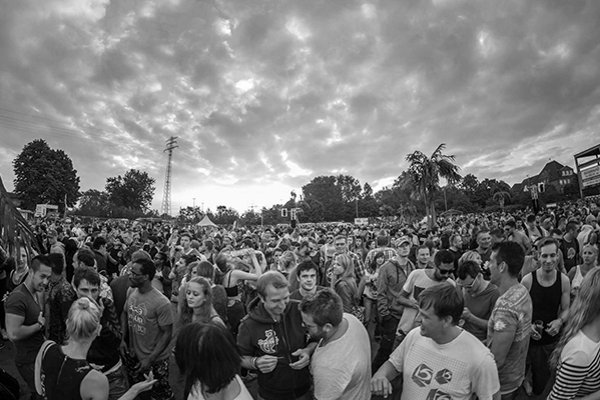
В начале 90-х в Германии появился более сложных техно-звук, который называли Tekkno или Bretter. Коверкание оригинального названия делало намек на более тяжелое, альтернативное звучание. Многие отмечали, что стилистика отдалена от звуков Детройта и походит на европейский вариант.
Это явление часто неправильно классифицировали жанр, объединяя всех и вся под единым понятием. К стилистике причисляют как New Order, Depeche Mode или Heaven 17, так и Front 242, Kraftwerk.
Это накаляло обстановку, становилось спором между фанатами. С течением времени более жесткое звучание стало отходить на второй план, любители танцевальной музыки переходили на кислотный хаус. Это оказалось причиной спада напряженности и выхода на новый уровень.
EDM
Now then, we have a seriously contentious entry on this list. EDM. Standing for Electronic Dance Music. Is it even a genre? Or is it just a catch-all statement abbreviated and overly used to describe specific types of electronic music?
All of those questions and more have been debated for over a decade now. So, we’re going to just let you know how we’re defining this type of electronic music – purely for the sake of this article. When we reference EDM in this sense, we’re looking to that ‘big room’, stadium or Tomorrowland-festival style house music. Think Guetta, Swedish House Mafia and the like.
EDM Subgenres
With the above in mind, it kind of means sub genres here aren’t as relevant, as all EDM is, within this article at least, is that big house sound that dominated the UK and US charts for virtually the whole of the 2010s. With that in mind, we’re going to list a few artists instead, so you get what we’re calling EDM.
Industrial and Post-Industrial
Industrial Music gets its name from the British ‘Industrial Records’ founded in 1976. Its sound is a mix of hardcore punk and heavy metal with beat-heavy electronic music. Distorted guitars, provocative lyrics, and melodic hooks are paired with synthesizers and samplers. The result is an aggressive sound with a danceable rhythm.
Artists like Skinny Puppy, Numb, and Front Line Assembly popularised this sound in the 80s, and bands such as Nine Inch Nails and Marilyn Manson would further experiment with the genre in the 90s by adding heavily overdriven or distorted guitars to the mix.
Industrial is often considered a precursor to Dark Electro and Aggrotech.
Industrial music branched out into Post-Industrial sounds such as Ambient Industrial, Electro-Industrial, Industrial Rock, Industrial Hip-Hop, Powernoise, Neofolk, Power Electronics, and Witch House.
House
Debatably the most easily recognised and popular of the genres on this list, house music can be traced back to 1980s at pioneering clubs in Chicago. Since then, the genre has taken on many different forms as different nations and cultures interpreted the sound. Like many others on this list, this genre can seemingly have an endless amount of sub genres depending on where you’re from. So let’s take a look.
House Subgenres
As we said, this is a subjective question. We could’ve had a house subgenre list twice this size, however, to keep it more succinct, the below are what we’ve agreed are the main ones. Notable absentees from this include; Balearic, Tropical, Tribal, New Jersey, Latin, Jersey, Italo, French, Dutch and Chicago. We could go on, but let’s get into what we see as the main house genres.
- Acid House
- Ambient House
- Classic House
- Deep House
- Electro House
- Funky House
- Future House
- Progressive House
- Tech House
Acid House
Starting in the mid-1980s in Chicago, Acid House was quickly adopted in the UK. Connected by what can only be described as a ‘squelching’ sound the Roland TB-303 synthesizer-sequencer helps to create – as well as the accompanying basslines, this type of house completely exploded in the UK into the late 1980s. Listen to DJ Pierre, Phuture and A Guy Called Gerald.
Ambient House
Delivering what it says on the tin, Ambient House is credited to being born by The Orb at the nightclub, Heaven. It first emerged a little after Acid House in the late 1980s. Head to artists including The Orb, The KLF and Bull Drummond.
Classic House
Essentially the type of house that stays true to the genre’s roots of the clubbing seen in 1980s Chicago, classic house is less of a sub genre and more of a reference point. You want artists like Marshall Jefferson, Todd Terry, Frankie Knuckles and Kerri Chandler.
Deep House
Making use of a deeper aesthetic, muted basslines and allowing more room for the percussion to breathe, deep house started in the 1980s as fusion between Chicago House, jazz-funk and elements of soul. Listen to Miguel Migs, Kaskade, Lisa Shaw, Saison and Sebb Junior.
Electro House
A far more commercial sound, the electro house style can be very varied (some would argue many we’ve put in “EDM” are in fact electro house artists). It first emerged late 1990s and it arguably reached a peak in popularity in the 2010s. Head to people such as Daft Punk, Bloody Beetroots, Basement Jaxx and Feed Me.
Funky House
Blending the worlds of funk, disco and house, with influences from across many decades dating back to the 1970s, funky house is another subgenre that lives up to its name. Record labels such as Defected Records, Ministry of Sound and Hed Kandi will give you a good idea of this sound, including artists such as Dave Lee, Dennis Ferrer, Armand Van Helden and Shapeshifters.
Future House
Emerging in the 2010s, Future House blends elements of UK Garage and deep house. It’s a bass-driven, as opposed to melodically or funk driven subgenre and very popular in the UK. Lucky Luke, Nu Aspect, The Him and Tchami will give you a good idea of this scene.
Progressive House
Emerging in the early 1990s, the progressive style is largely credited with being produced from the developing UK scene. Long, drawn out build ups and plenty of melody can be found within this sound. Made particularly popular by the likes of Martin Garrix, Swedish House Mafia and Deadmau5 in the early 2010s. Artists include Tiesto, Hardwell, Deadmau5 and Cid Inc.
Tech House
Blending the worlds of techno and progressive house, tech house features more rough basslines and hard hitting beats mixed with melodics and groove to create a pretty unique and hugely popular sound. Kicking off in the mid to late 1990s you want to check out the likes of Jamie Jones, Carl Cox, Hot Since 82 and Patrick Topping.
Выход жанра на мировой уровень
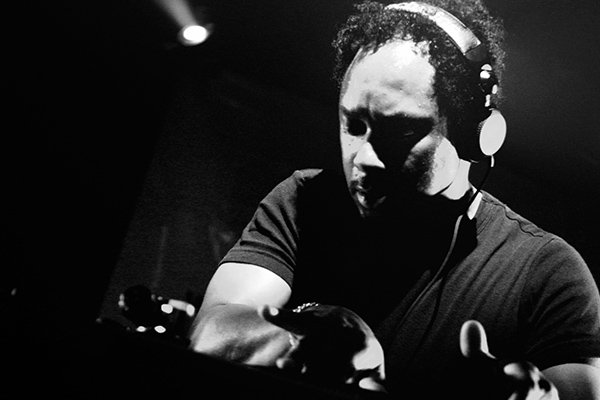
Несмотря на появление и быстрое развитие жанра на территории США, стилистика долгое время оказывалась изолированной. Первое появление на мировой сцене состоялось только к 1987 году и благодаря Деррику Мэю. Музыкант издал композицию Strings of Life, которая стала одной из самых популярных среди танцевальных в Великобритании.
Музыка начала распространяться по Европе, из Британии в Германию, Бельгию и некоторые другие страны. Здесь началось развитие собственной направленности с рядом особенностей. В Великобританию овладела волна не только техно, но и кислотного хауса. Субкультура часто соотносилась с опасениями властей, что отправило жанр в андеграунд.


































